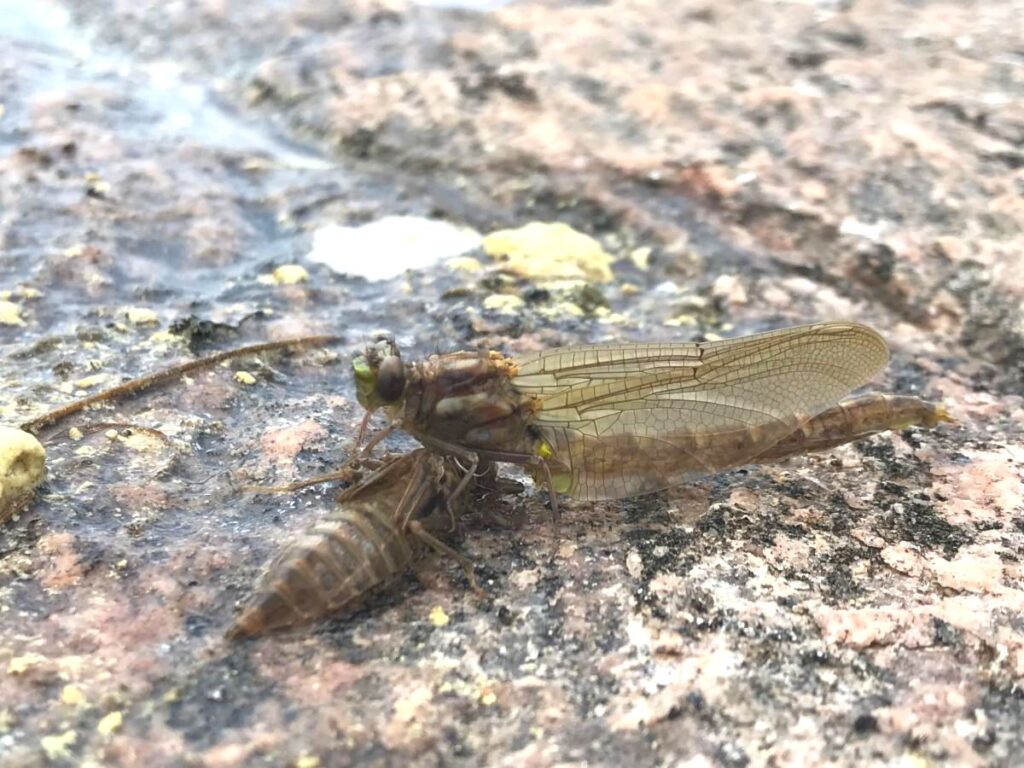Squadrons of dragonflies have appeared in the skies of Georgian Bay. The sky in the lee of the closest cedars looks like the busiest airfield imaginable, with masses of them hovering, zigzagging, climbing and diving as they feed and mate on the wing.
Like sharks, the near perfect design of the dragonfly has survived unchanged for about 300 million years. With two sets of wings and nearly 360 degree vision, they make highly maneuverable and voracious winged hunters, eating mosquitos, flies, grasshoppers, butterflies, and even other dragonflies.
| Like little helicopters, dragonflies will sometimes rev up their wings to fly. Being cold blooded, they need to warm up their flight muscles on a cool morning and do this by either basking in the sun or “wing whirring”, a rapid vibration of the wings that causes heat to be generated. On a hot day I’m sure you have seen them cool off and maybe hydrate a little by skimming over the water, often touching the surface three times in quick succession.Dragonflies are carnivores and may consume up to 1/5 of their body weight per day. Their eating habits are not delicate- larger prey (such as butterflies!) are subdued by being bitten in the head and carried off to a perch, where the wings are “discarded” and the rest ingested headfirst. These bold and beautiful insects are important barometers of water quality, as they live most of their lives- up to 5 years, depending on the species- as nymphs in lake bottoms and riverbeds. Dragonfly nymphs, or naiads, moult underwater several times before climbing out for their final short-lived transformation. |

| If dragonflies are fearsome in the skies, the story of their aquatic phase is even more…fantastic. Underwater, their hunting prowess can be attributed to their ability to clench their behinds and produce speed and power any engineer would marvel at. For more, have a look at this gleeful yet informative article from Wired magazine, of all places…I hope you it makes you smile! |

